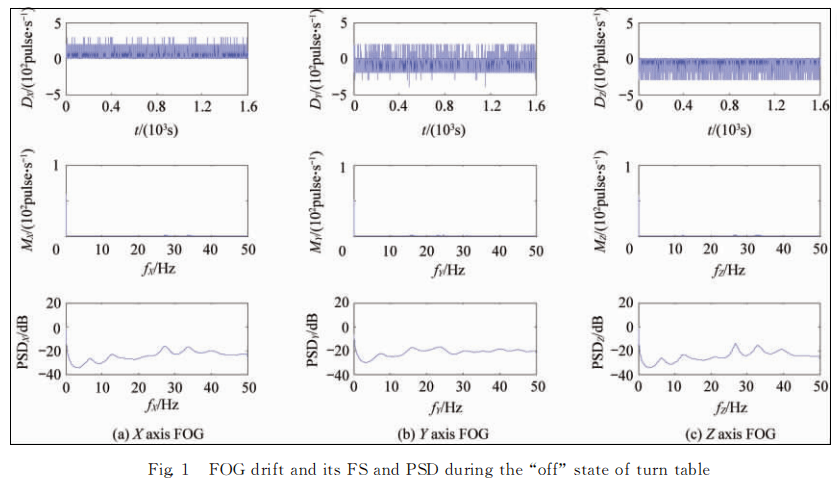Learn how to reduce magnetic sensitivity in FOG IMUs with advanced techniques like depolarization, magnetic shielding, and error compensation. Discover high-precision solutions for aviation and navigation systems.
In high-precision inertial measurement units (IMUs), the fiber optic gyroscope (FOG) is one of the core components, and its performance is crucial for the positioning and attitude perception of the entire system. However, due to the Faraday effect of the optical fiber coil, FOG is extremely sensitive to magnetic field anomalies, which directly leads to the degradation of its zero bias and drift performance, thereby affecting the overall accuracy of the IMU.
So, how is the magnetic sensitivity of FOG IMU generated? And how can this influence be effectively suppressed? This article will deeply analyze the technical paths to reduce the magnetic sensitivity of FOG from the perspective of theory to engineering practice.
The reason why FOG is sensitive to magnetic fields lies in the Faraday effect - that is, when linearly polarized light passes through a certain material, under the influence of a magnetic field, its polarization plane will rotate. In the Sagnac ring interference structure of FOG, this rotational effect will cause a phase difference between two beams propagating in opposite directions, thereby leading to measurement errors. In other words, the interference of magnetic fields is not static but dynamically affects the output of FOG in a drifting manner.
Theoretically, an axial magnetic field perpendicular to the axis of the optical fiber coil should not trigger the Faraday effect. However, in reality, due to the slight inclination during the winding of the optical fiber, the "axial magnetic effect" is still triggered. This is the fundamental reason why the influence of magnetic fields cannot be ignored in high-precision applications of FOG.
a. Depolarization technology By replacing polarization-preserving fibers with single-mode fibers, the magnetic field response can be reduced. Because single-mode fibers have a weaker response to the Faraday effect, the sensitivity is reduced at the source.
b. Advanced winding process
Controlling the winding tension and reducing residual stress within the fibers can effectively reduce magnetic induction errors. Combined with an automated tension control system, it is the key to improving the consistency of polarization-preserving coils.
c. New low-magnetic-sensitivity optical fibers
At present, some manufacturers have launched optical fiber materials with low magnetic response coefficients. When used in combination with ring structures, they can optimize the magnetic anti-interference ability at the material level.
a. Magnetic Error Modeling and Compensation
By installing magnetic sensors (such as flux gates) to monitor the magnetic field in real time and introducing compensation models in the control system, the output of FOG can be dynamically corrected.
b. Multi-layer Magnetic Shielding Structure
Using materials such as μ-alloys to construct double-layer or multi-layer shielding cavities can effectively weaken the influence of external magnetic fields on FOG. Finite element modeling has confirmed that its shielding efficiency can be increased by tens of times, but it also increases the system weight and cost.
In a set of experiments based on a three-axis turntable, researchers collected the drift data of FOG in both open and closed states. The results showed that when the magnetic field interference was enhanced, the drift amplitude of FOG could increase by 5 to 10 times, and obvious spectral interference signals (such as 12.48Hz, 24.96Hz, etc.) appeared.
This further indicates that if no effective measures are taken, the accuracy of FOG will be greatly compromised in actual aviation, space, and other high electromagnetic environments.
In practical applications, we recommend the following combination strategies:
(1) Select polarization-eliminating FOG structure
(2) Use low-magnetic-response optical fibers
(3) Introduce optical fiber winding equipment with automatic tension control
(4) Install three-dimensional flux gates and build error models
(5) Optimize the design of μ-alloy shielding shells
Taking the U-F3X80, U-F3X100 series launched by Micro-Magic as examples, the integrated optical gyroscopes inside them have maintained stable output even in the presence of magnetic interference through multiple technical improvements, making them the preferred solution among current aviation-grade IMUs.

In high-precision positioning, navigation and guidance systems, the performance of FOG IMU determines the reliability of the system. And magnetic sensitivity, as a problem that has been overlooked for a long time, is now becoming one of the "bottlenecks" of accuracy. Only through collaborative optimization from materials, structures to system level can we truly achieve high-precision output of IMU in complex electromagnetic environments.
If you are confused about IMU selection or FOG accuracy issues, you might as well rethink from the perspective of magnetic sensitivity. Micro-Magic’s FOG IMU U-F3X80, U-F3X90, U-F3X100,and U-F300 are all composed of fiber optic gyroscopes. In order to improve the accuracy of FOG IMU, we can completely reduce the magnetic sensitivity of the fiber optic gyroscopes inside them by corresponding technical measures.

Xml Privacy Policy Blog Sitemap
copyright @ Micro-Magic Inc All Rights Reserved.
 Network Supported
Network Supported
